How Many Continents Are There? (Simple Question, Complex Answer)
shares

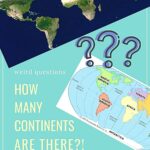
This article may contain affiliate links . If you make a purchase through these links, I will earn a commission at no extra cost to you. Thanks!
Who could imagine that trying to answer the question of “How many continents are there?” could be so complicated! I certainly never would have thought that… Indeed, growing up in the United States, I just took it as fact that there were 7 continents on earth. I mean, looking at the map, it all seemed pretty logical too, for the most part.
Those seven continents are:
- North America
- South America
- Europe
- Asia
- Africa
- Oceania
- Antarctica
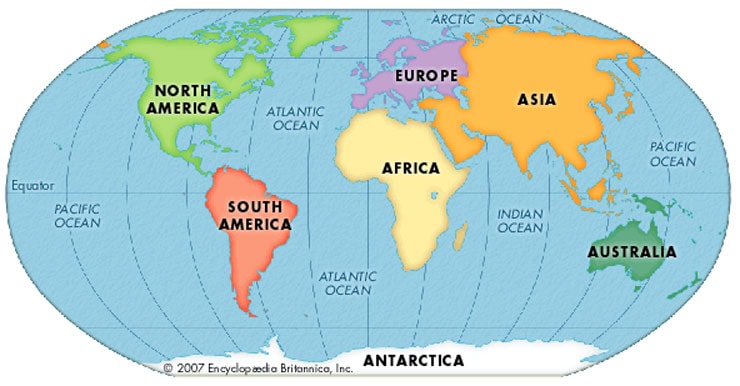
Although once I learned to actually think for myself rather than repeat things I was told, I found it strange that Europe and Asia are separate continents and largely dismissed that as nonsense. The real reason for the claim that they are separate continents has nothing to do with physical landmasses or plate tectonics, but more of an imperialistic Us vs Them, West vs East mentality.
But it wasn’t until much later in life, while traveling to Colombia, that my mind was blown when I learned that they only consider there to be five continents! I can’t remember how the conversation came up, but my girlfriend and I both were in disbelief… Like, what do you mean there are only five continents? Or how on earth on there seven continents?
In much of Europe and Latin America, they are taught the five continent model which consists of:
- America
- Europe
- Asia
- Africa
- Oceania
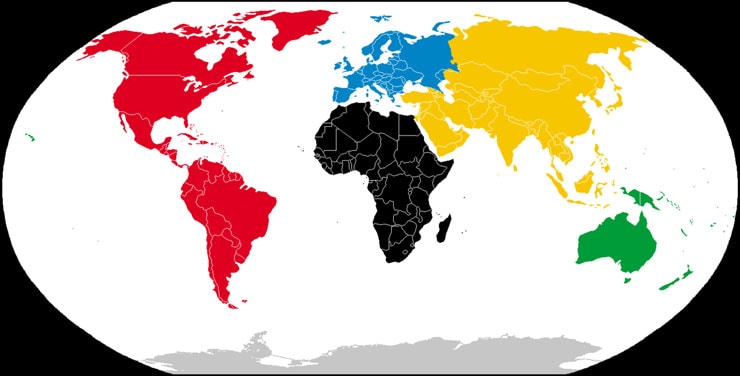
So basically North and South America are considered one and Antarctica doesn’t even count (it is literally grayed out on this map). As a lover of maps, geography, and history, the whole thing struck me as quite interesting and I realized that the answer to this question that I had never really asked myself before, wasn’t as obvious as it might seem at first blush.
The whole question of how many continents are there has been something that has been wrestled with going as far back as Herodotus as he tried to grapple with whether there were two or three continents and how to delineate them, particularly since all of Africa, Europe, and Asia is a connected landmass.
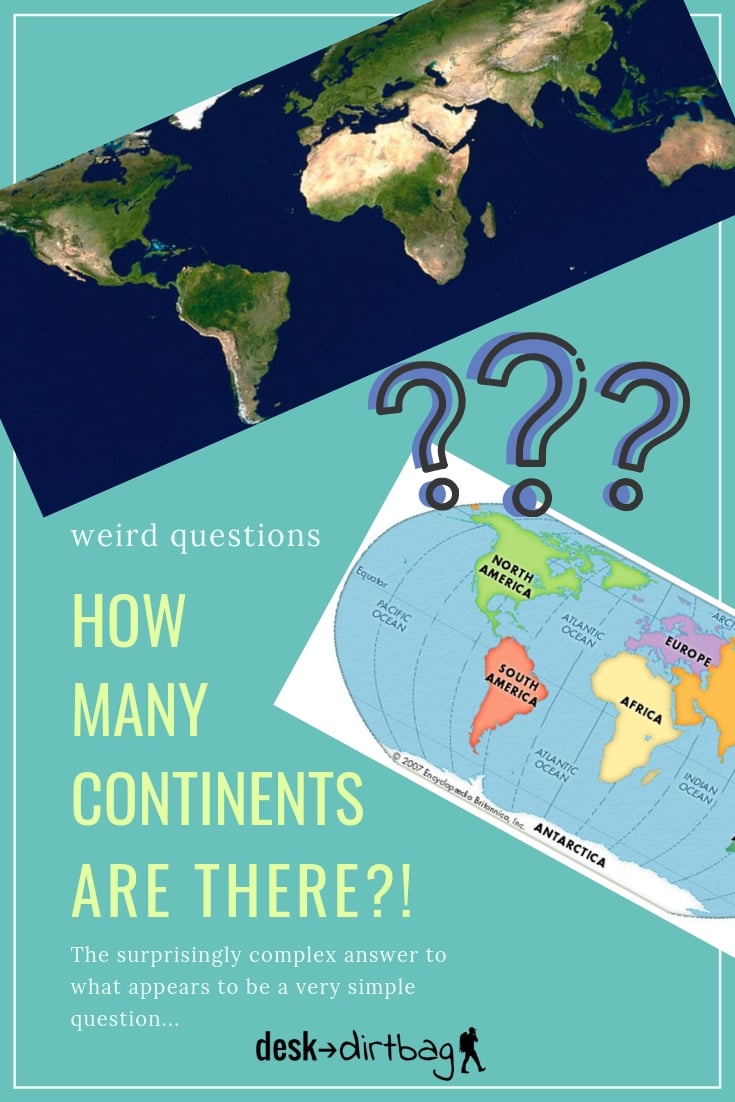
Mục Lục
What is a Continent?
I’d always understood the definition of a continent to be a big ol’ chunk of land… But I guess that wasn’t official enough, so I looked up the definition on Dictionary.com and found:
continent[kon-tn-uh nt]
noun
one of the main landmasses of the globe
Word origen: from the Latin phrase terra continens continuous land, from continēre
And then there was something about being able to control your bladder and bowels, but that’s another article for another day.
Anyway, so I guess I was pretty much on point… It is one of those main, large landmasses that are continuous in nature and mostly surrounded by water. It is important to note that that is a more modern definition of a continent, not steeped (at least not entirely) in the conventions of Greeks or Romans from thousands of years ago who were trying to differentiate their small known world into different continents.
Today then, the answer to “how many continents are there” has more to do with where you grew up and where you went to school than any official answer or number.
According to the Anglophone model (aka British), there are seven continents… North America, South America, Europe, Asia, Oceania (Australia, New Zealand, and the Pacific Islands), Africa, and Antarctica.
According to the Francophone model (aka French), there are six continents… America, Europe, Asia, Oceania, Africa, Antarctica.
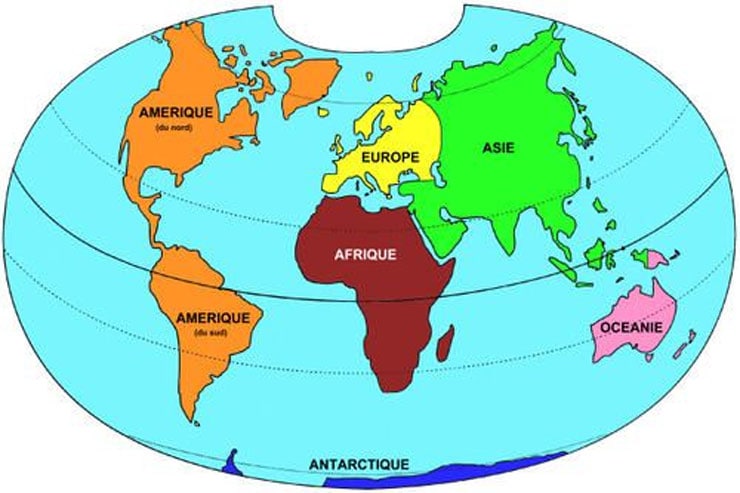
I’m not an expert in Russian, but their model would appear to also have six continents… Eurasia, Oceania, Africa, Antarctica, North America, and South America.
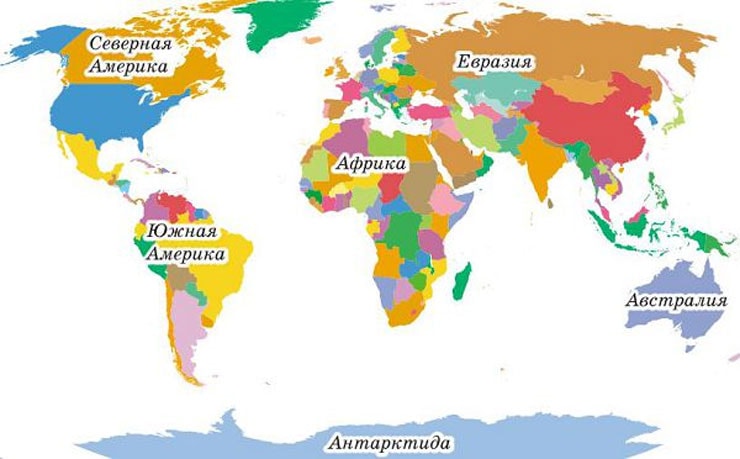
In much of Latin America, they are taught there are five continents… America, Europe, Asia, Africa, Oceania.
Recent news has even suggested that there should be an eighth continent added, that of Zealandia! Based on a hidden underwater continent in the Pacific Ocean.
The fact is that most of these old definitions of continents were not based on physical geography but rather simple racism under the fourfold continental scheme (again, Oceania and Antarctica weren’t under consideration) of the eighteenth century which was more about sovereign states and identity.
Therefore, Europe was the land of white people, Africa the land of black people, Asia the land of yellow people, and America the land of red people.
Not only is that definition of continents pretty repugnant in this day and age, but again, it doesn’t even pass simple tests in terms of the skin color of where exactly Europe or Asia begin, or Africa either, since sub-Saharan Africa is different from Northern Africa which is often lumped into the Middle East region.
Regions vs Continents
It is important that we distinguish between regions and continents… Continents are those very large landmasses, whereas regions are PARTS of those continents, sometimes even straddling across different continents…
Regions do take geography into account, but also mix it with other factors like language, culture, religion, history, etc… That is very different from determining continents which are supposed to be large continuous landmasses.
In terms of regions, Central America would be considered part of either North America or America (depending on how you define continents), and the Middle East would be considered part of both Africa and Asia (and which is sometimes now referred to as MENA aka the Middle East and North Africa).
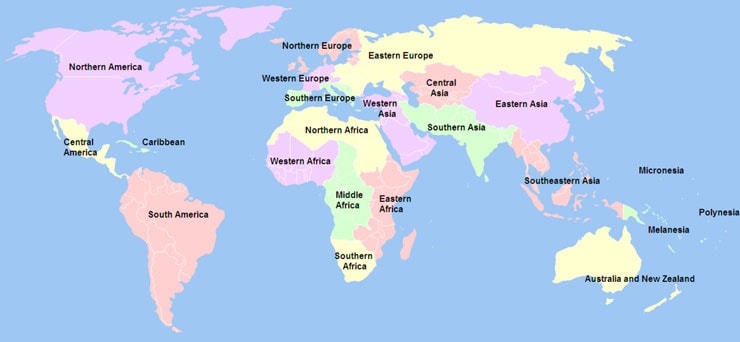
In my article about the best places to visit in Central America, I included Mexico under consideration as well, in part because the United Nations’ geoscheme considers Mexico along with all of its neighbors to the south within “Central America”.
Despite the fact that the framework for my blog post is UN-backed, and I made the case for including it for a number of other reasons (the entire Yucatan is historically, culturally, and geographically part of Central America without a doubt), people were still ready to rip my head off…
“MEXICO IS IN NORTH AMERICA!!!” They screamed in the comments with rage.
To which I would always confusedly respond with “Uhh, yeah, I know. I never said it wasn’t part of North America… In fact, ALL of Central America is part of North America.”
I kept getting these comments over and over and over again, which was driving me crazy, but it raised interesting questions and lead me to further research the whole idea of continents, how many continents there are, and how different regions of the world have defined what would seem to be such an easy or obvious thing.
How many continents there are is certainly MUCH, MUCH easier than trying to distinguish the exact borders of a region like the Middle East, Southeast Asia, Central America, or even “the South” or “West Coast” in the United States.
Is America the United States?
Part of the confusion (and often anger) comes from the fact that people that live in the United States of America call themselves Americans when parts of the world like Europe or Latin America teach that there is just one continent known as America…
Therefore, everyone from Canada to Paraguay is considered American… (Even though no one in those countries calls themselves an American. They are always Mexicans, Colombians, Argentineans, etc.)
People in the USA call themselves Americans because the country is officially called the United States of America, just like Mexicans call themselves Mexicanos, even though their country has basically the same name and is officially called los Estados Unidos Mexicanos — the United Mexican States (the US in Spanish is called los Estados Unidos).
There is no other word in the English language to call ourselves… What do you want us to say, United Statesean? That word doesn’t exist in English like in other languages, aka estadounidense…
But even so, that Spanish word is ONLY used for those from the United States… No one calls the people from the Estados Unidos Mexicanos estadounidenses. They are Mexicanos. Nor does anyone from Bolivia call themselves the estadoplurinacionales from the official name of Estado Plurinacional de Bolivia. Nor does anyone from the Republica de Colombia refer to themselves as Republicanos.
It isn’t my fault that they decided to name the country the United States of America after Amerigo Vespucci… Not any more than Colombia naming themselves after Christopher Columbus who had about as much to do with mainland Colombia as he did with the United States.
So, therefore, shouldn’t all of us in the Americas be considered both Americans and Colombians? But nobody gets mad that Colombians call themselves Colombians, but some people do get mad when Americans call themselves Americans.
It also makes sense then when you consider that in the United States (and other parts of the world) that we CAN call ourselves Americans without confusion because there are TWO separate continents called North America and South America, not one single continent called America which it could be confused with.
And yes, some people talk about North Americans in general, and yes, that should refer to everyone from Panama north, just like South Americans is a blanket term for everyone in Colombia and south.
But this mix up about Americans leads some Spanish speakers to call those from the USA as estadounidenses, americanos, and norteamericanos. I’ve been called ALL of those things in my travels, as well as gringo, of course, which they also sometimes use as a blanket term for any white foreigner, even those from Canada or Europe when they really mean to use it just for those from the USA.
Confused yet?
Is America One Continent or Two?
It almost defies common sense to think that America is one continent based on that whole modern definition of a continent as a large continuous landmass. I mean, just look at a map of the globe and you can see two giant, but mostly separate landmasses aka continents in the Americas.
I’m pretty sure that you could ask any 5-year old child around the world to make a circle around the big chunks of land and they are going to make two different circles for both North and South.
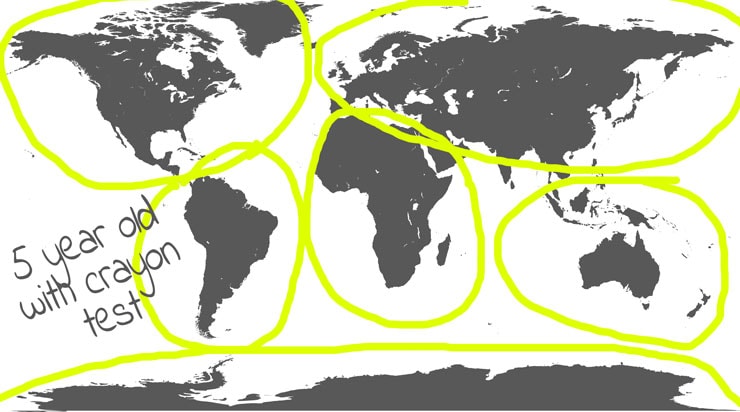
I mean, if it passes the logic test of a five-year-old child, why shouldn’t that hold true for adults? You can even forget about models based on the continental crust or a continental shelf, which also support the above number of continents, and just look at things at face value.
Technically, North and South America ARE connected… But they are connected by a tiny stretch of virtually impassable land. Whereas, Europe, Africa, and Asia are connected as well, but by much broader swaths of land.
Instead, we have to come up with convoluted reasons why North and South America are one, but Europe and Asia should be considered two… Huh?
Europe or Eurasia?
I am of the opinion, along with many others (and I’m almost positive that the five-year-old child would also be in agreement), that Europe and Asia should NOT be considered separate continents.
The reason why I believe that Europe and Asia should be considered one because there is NO distinguishable boundary between them. People literally fought and struggled for centuries to INVENT the dividing line between Europe and Asia… Is it a river or mountains, is it this or that? It changed whenever they could think of a better excuse.
They have settled on the modern (invented) definition of the Ural Mountains as the border… But that is just dumb because the mountains 1) don’t even stretch sufficiently far to the south to act as a full delineation, and 2) they are an extremely LOW and unimposing mountain range — we aren’t talking about the Alps, the Rockies, the Andes, or the Himalaya, here.
The highest peak in the Urals is just 1,895 m (6,217 ft)… Compare that to the Appalachians in the eastern United States which have at least TEN peaks that are higher than the Urals… So is the east coast of the United States its own separate continent? Of course not, that makes NO logical sense.
In Eurasia, you can’t even conveniently use the modern geopolitical boundaries of nation-states as the basis of the line between continents because Russia straddles both Europe and Asia in the agreed-upon definition. Today, Europe and Asia are connected by countless roads, trains, and no one could actually tell you where one starts and the other begins.
Therefore, if we are even going to entertain the idea of North America and South America as one continent, then we should HAVE TO consider Europe and Asia to be one…
Eurasia.
Not only that, though, we would also have to consider Africa as part of the same continent, because the physical connection between Africa and Asia is MUCH larger than the physical link between North America and South America — nearly twice as large (the narrowest point in Panama is like 60 miles across compared to 140 miles in Egypt).
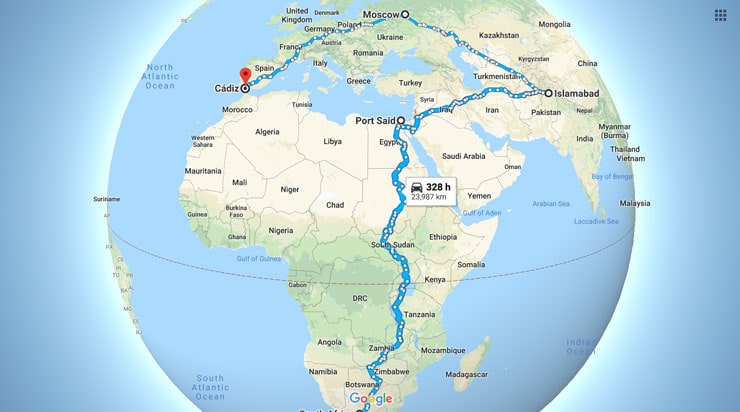
If it weren’t for current geopolitical complications with Israel and their neighbors, it would be quite simple to drive from Africa to Asia to Europe… These landmasses are quite obviously connected and easily navigable, unlike North America and South America (which is currently not passable by vehicle… I had to load my truck into a container to go from Panama to Colombia).
Then how many continents are there?
Well, I don’t really agree with any of the mainstream systems… The seven-continent system doesn’t pass the smell test because Europe and Asia are indisputably one continent. They would be better thought of as very large regions, something like Sub-Saharan Africa, Central Asia, etc.
The conventional six continent system doesn’t make sense either because they consider America to be one continent but then Europe and Asia are two… Nope, you are already contradicting yourself.
The five continent system doesn’t make sense either since they don’t even consider Antarctica to exist — huh? There is land under that snow and ice. And they fall victim to the same logical fallacies in the six continent system.
So, according to the “America is one continent system,” logically EurAfricAsia should be one, then there’s Oceania, America & Antarctica, making for a total of four continents — oops, right, Antarctica doesn’t exist, so just three continents. America, EurAfricAsia, and Oceania.
No, in terms of the modern definition of continents as large continuous landmasses, I would say that there are indeed six continents, but those six continents would be North America, South America, Eurasia, Africa, Oceania, and Antarctica.
Again, Africa/Eurasia and North/South America would be considered as separate continents because of the relatively small connection between two insanely obvious, large, and separate landmasses that anyone can tell just by looking at Google Maps rather than relying on distorted maps drawn by hand by senile old men in the fifteenth century.
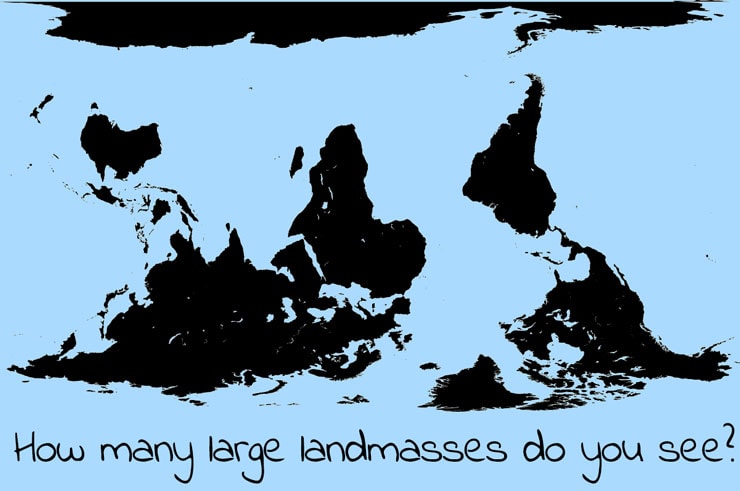
I’m pretty sure that passes the five-year-old kid logic test and makes the most sense when you just look at the world in terms of actual landmasses without having centuries of conventions clouding your judgment… But, I suppose you could make a case for even fewer continents, if you wanted, just be sure to use a consistent metric or definition, please!
This article was a bit tongue in cheek about the “how many continents are there” question, but for something more scholarly and historically accurate, check out this article about the myth of continents and their creation, particularly of the much more complex Europe/Africa/Asia question.
Share This
Was I able to answer your question about how many continents are there? Did I just make you made or confuse you more? Either way, take a second to share this article on Pinterest, Facebook, or Twitter. Thanks!
shares















![Toni Kroos là ai? [ sự thật về tiểu sử đầy đủ Toni Kroos ]](https://evbn.org/wp-content/uploads/New-Project-6635-1671934592.jpg)


